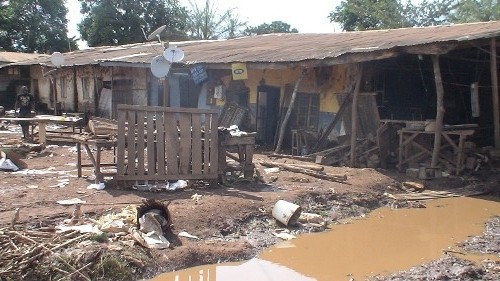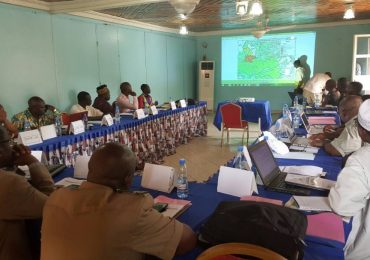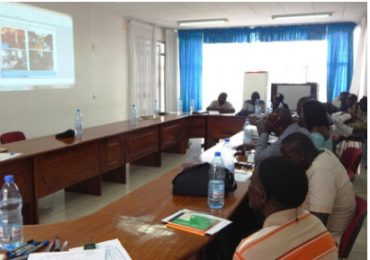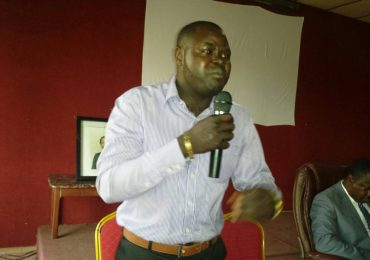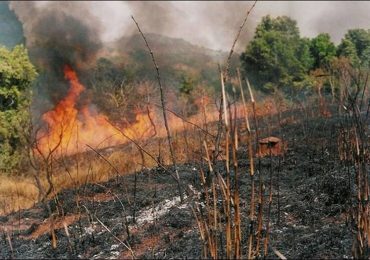The afternoon of 9 Sunday, September, 2012 in Babessi Sub-Division, Ngoketunjia Division of the North West Region, was relatively calm, but, before sunset, a ferocious wave of water rolled onto the village submerging Chui, Abakwa Centre, Mbow and Mbezoh quarters.
By Aminateh Nkemngu
Sixty houses were reduced to rubble, at least 95 families displaced and women, men and children had to run helter-skelter for their lives.
According to the interim Mayor of Babessi, Tamfu Enusa Konningongoh, the floods were caused by the collapse of a bridge on River Manda in the Bui highlands, diverting the course of the river which gushed into Babessi, located in the Ndop Plain.
“The situation was further compounded by a downpour that fateful evening and the following morning,” said Mayor Tamfu Enusa.
The floods washed away some 160 hectares of cropped land (swamp rice, cocoyam (colocassia) plantains and beans) belonging to 139 farmers.
“The floods came when the crops were mature for harvest and significantly reduced the amount of produce that would have been on the market and in homes,” said Philip Ngwa, the Sub-Divisional Delegate of Agriculture for Babessi.
The Delegate said water from the Bamendjin Dam has caused the water table in many areas of the Ndop plain to rise, consequently reducing farmland and raising pressure on fertile land for cultivation
The Bamendjin Dam was constructed on the Upper Noun River over three decades ago.
All the rivers in the Ndop Plain empty into the Noun River.
The Bamendjin Dam was constructed on the Noun River which is further down the plain.
According to the interim Mayor of Babessi, Tamfu Enusa, when the construction of the dam was launched, there was need to relocate those living on the risk line, but they never moved and have continued to live there.
“That is why with heavy rains from the Ndop Plain with a dam further down, a flood is always inevitable,” Tamfu said.
He warned that Bambalang, Bangolan, Baba I, Bamunka and even Babungo risk being flooded in the future and the consequences could be worse.
“Those dwelling in swamps (behind the dam), which had earlier been earmarked for relocation during the construction of the dam, need to be moved,” the Mayor told The Green Vision.
The artificial lake behind the dam though, remains a mixed blessing as some communities depend on it for catching what is commonly known in the area as “Bambalang fish”, which is a major source of income for the local population.
They, however, are in a constant battle with malaria which is spread by mosquitoes which breed in the swamps created by the dam.
80 Million For Victims Taboo?
Not soon after the Babessi villagers saw portions of their property and sources of livelihoods put on indefinite hold by the floods, the Minister Delegate in The Ministry of Territorial Administration and Decentralisation appeared with government’s aid – 20 million francs cfa worth of material assistance and 80 million francs cfa cash to help rehabilitate the victims.
The 80 million, however, soon became taboo subject.
Babessi DO, Ali Anogu, was in charge of establishing a comprehensive inventory of those affected and what they lost.
Ngoketunjia SDO, Kuela Valery Norbert, had said efforts were underway to clearly establish losses. Beyond this, he said government had made available some 40 hectares of land on which to resettle those living in the area identified as a risk zone.
The Minister of Surveys, State Property and Land Tenure, Jacqueline Koung A Besike, who traveled to Babessi, and SDO Kuela, said survey and demarcation work on the land had started.
The Minister said a committee to follow up the work on the ground had gone to work even though they also faced difficulties reaching some of the farmlands damaged by the floods.
A member of the committee who did not want to be named said the 80 million francs cfa was handed with percentage allocations on how to spend it.
Apparently, the committees and all others working on the relief effort had percentage cuts from the 80 million.
Babessi Council Development Officer, Che Anselm Suh, said he rushed from Bamenda to Babessi the day the floods struck to save some of his own belongings, but was reluctant to comment on the 80 million francs cfa.


